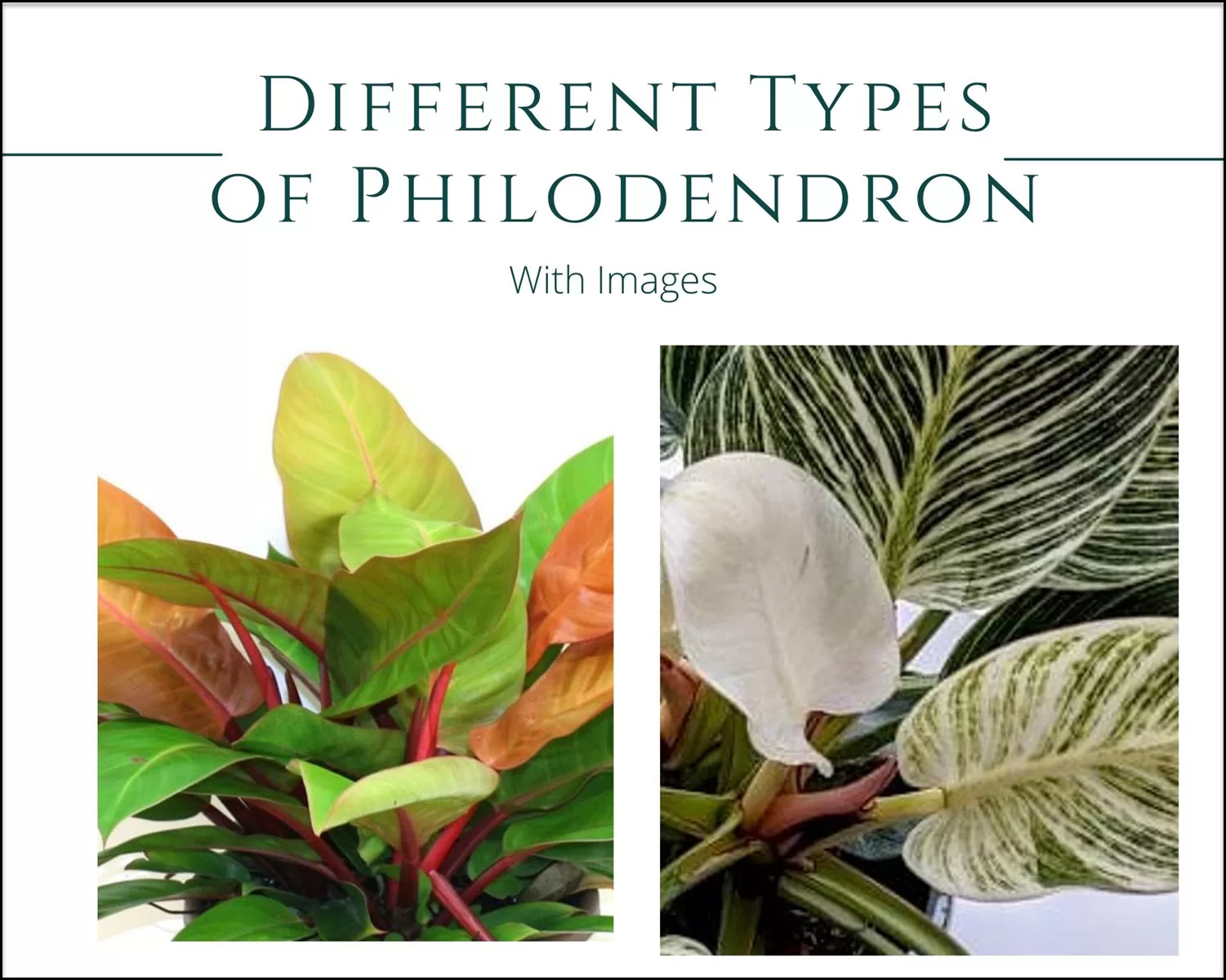Are you looking for some ornamental plants to beautify your garden or add to your existing collections? Try checking the different types of philodendron below.
What is Philodendron?
Widely grown as a greenhouse or indoor plant, philodendron is a tropical American climbing plant. This large genus of flowering plants in the family Araceae has about 489 species.
Just like other indoor plants, philodendrons are used for homes and businesses decorations. This is due to their captivating appearance that can really add charm and appeal to indoor spaces.
Philodendron has been loved by many plant enthusiasts all over the world due to its beautiful, large and glossy leaves. They can strive and still get those dark green leaves even with just indirect sunlight.
What Are The Different Types of Philodendron?
Philodendron actually translates to “Tree Of Love”. With different types of philodendron, it is not difficult to fall in love with this indoor-garden plant. It symbolises health and abundance, thus, having it would definitely have a purpose.
Here are the different types of philodendron:
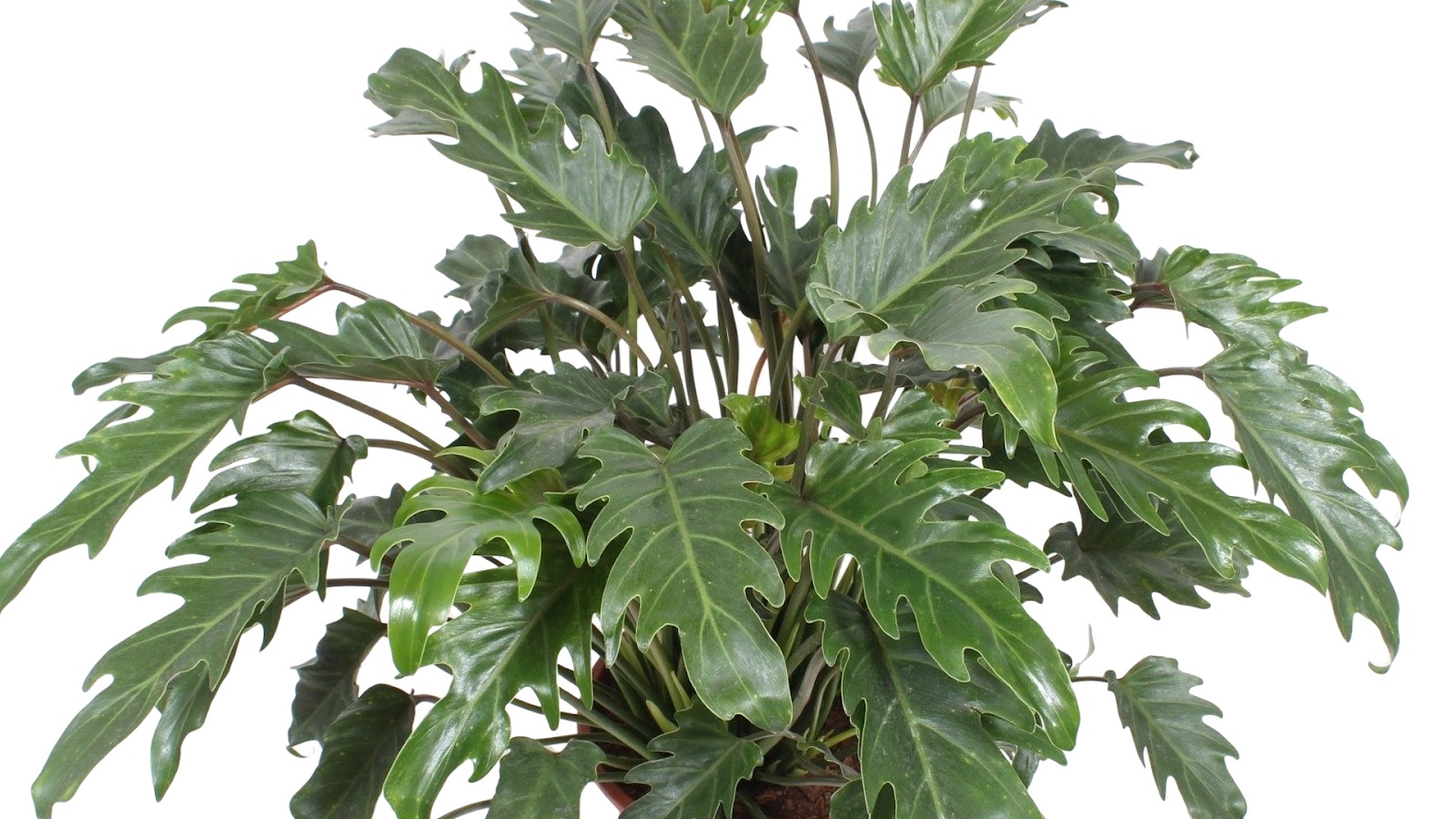
Philodendron Xanadu
Known as Xanadu Lime Gold or Thaumatophyllum xanadu, this type of philodendron is an exotic house plant with pale greeny, lime or golden leaves. Since most of the philodendrons possess dark green leaves, the Xanadu variety is known as one of the rare types of philodendron.
This is a perennial plant native to Brazil and comes from the arum family Araceae and the genus Thaumatophyllum, formerly classified under the Meconostigma subgenus of Philodendron.
This is one of the most widely cultivated philodendrons as a landscape plant in tropical, subtropical and warm temperate climates. It features some leaves that are very long, dark green and split, with very pronounced deep lobes.
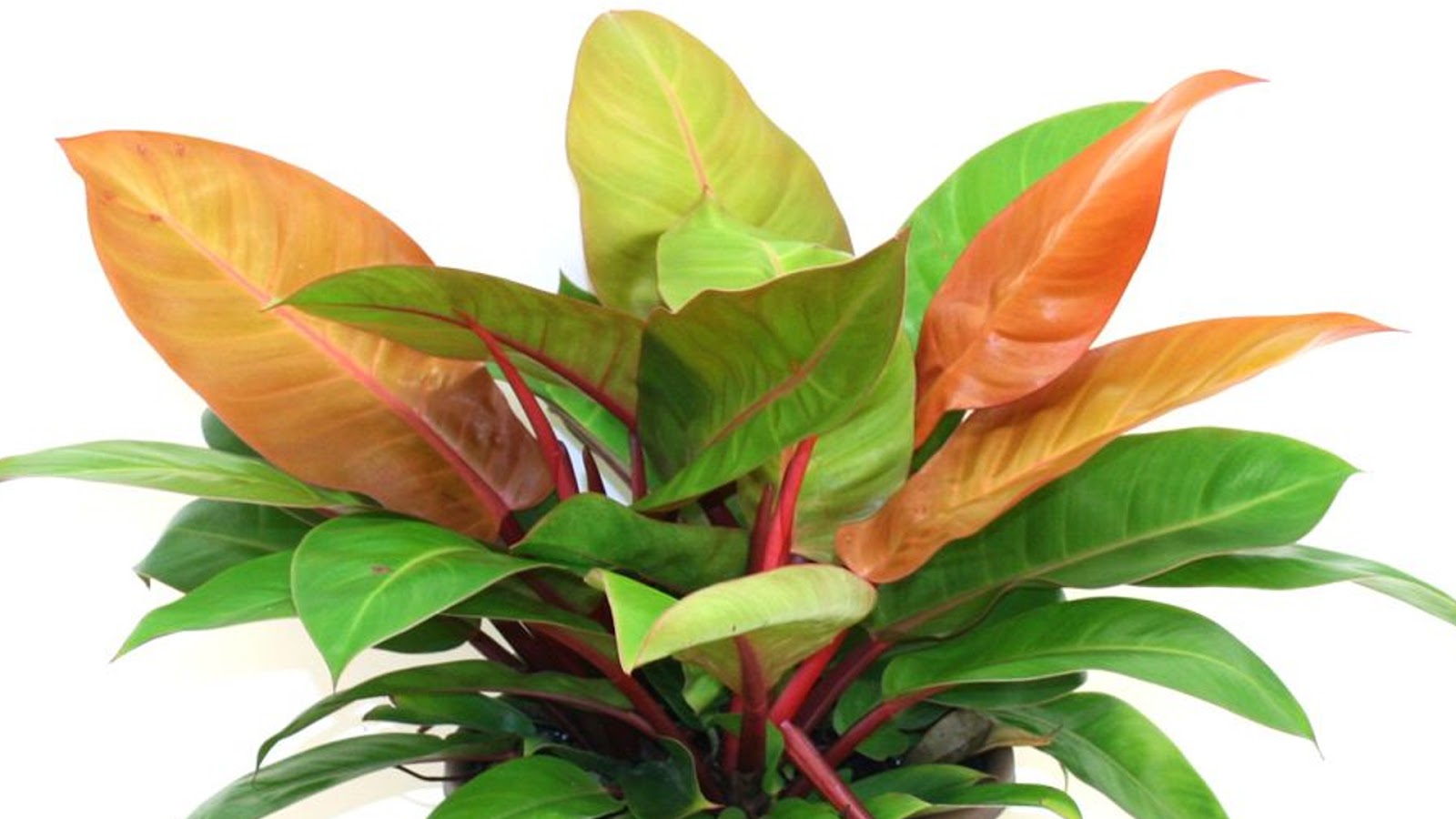
Philodendron Prince of Orange
One of the rarest types of philodendron, the Philodendron Prince of Orange or philodendron hybrid, features unique remarkable leaves, which change color as they mature from yellow to orange to dark green.
Philodendron prince of orange is compact, yet it can grow up to 2 feet tall indoors if cared for properly. The leaves of this philodendron are oval-shaped, and when they open, it sports a bright coppery-orange color.
Prince of orange philodendron is loved by most planters due to its colorful leaf stalks or petioles. To get that orange leaves, make sure to expose the plant in indirect sunlight or bright light. Putting it in hanging baskets might be a good idea.

Philodendron Hederaceum
The philodendron hederaceum is a species of flowering plant hailing from the family Araceae, native to Central America and the Caribbean. This plant can be recognized easily through its heart-shaped leaves.
Also known as the cream splash philodendron or sweetheart plant, the philodendron hederaceum is also the most common, most classical species among the types of philodendron. The foliage of its heart-shaped leaves are bright green, very rich and lush.
When matured, the philodendron hederaceum will sprout flowers that are small and white. It might be rare to see a buds sprouting, but when it does, be mesmerized with the spadix that is shorter than or equal to the length of the spathe.
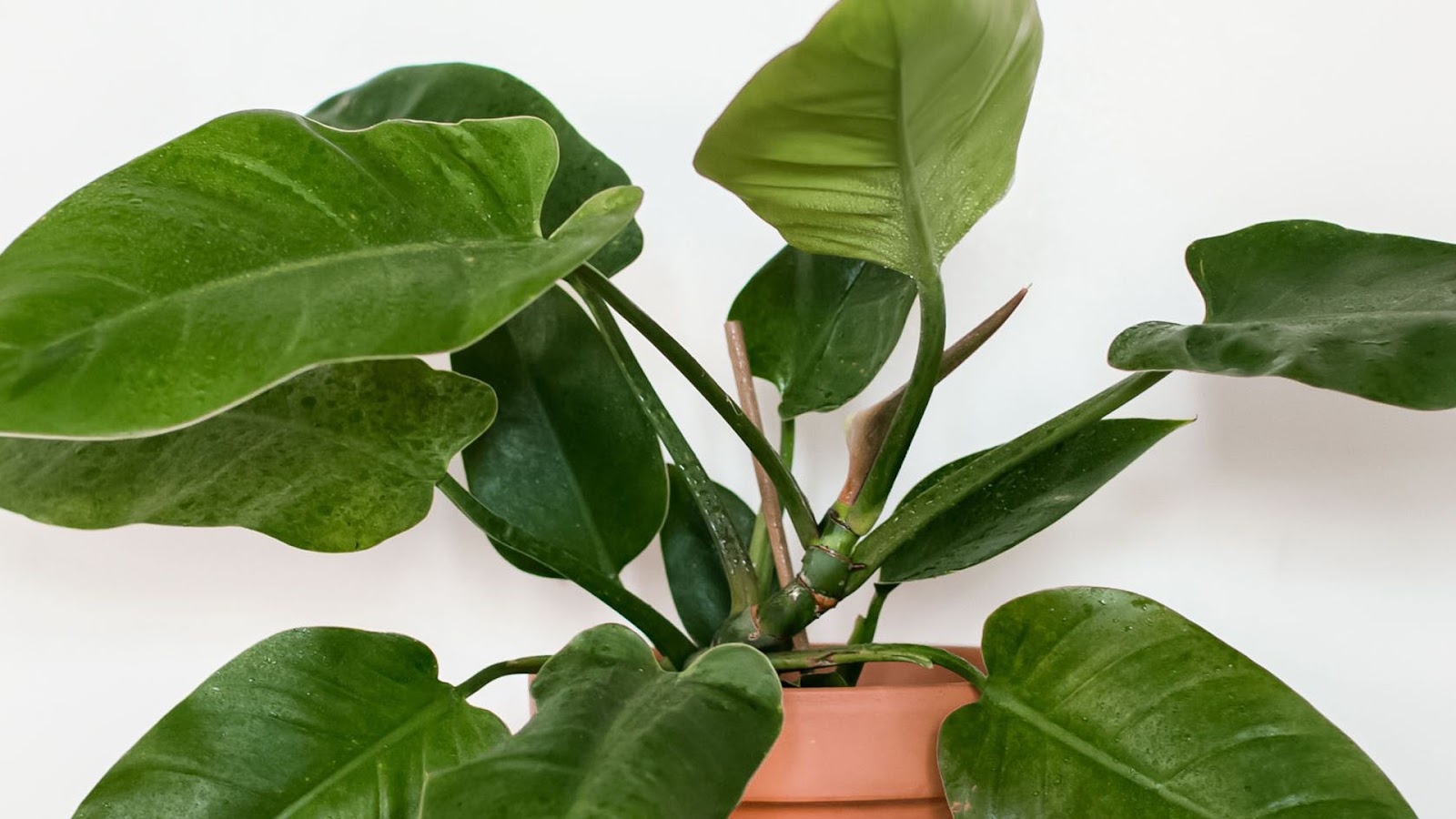
Philodendron Erubescens
Philodendron erubescens, or blushing philodendron, is native to Colombia. It is also from a species of flowering plant in the family Araceae that sports robust evergreen climbing vines growing to 3–6 m, with red highlights on the stems and heart-shaped leaves up to 40 cm in length.
The philodendron erubescens thrives well on rich, quick-draining, and loamy soil with a pH level of 5.6 to 7.5. This beautiful plant usually blooms around late spring and early summer with mesmerizing deep red flowers.
This heartleaf philodendron also prefers low light conditions, making it perfect to be placed in darker rooms, such as bathrooms. Make sure that you won’t place the philodendron pink princess outdoors, as the plant might not thrive well.
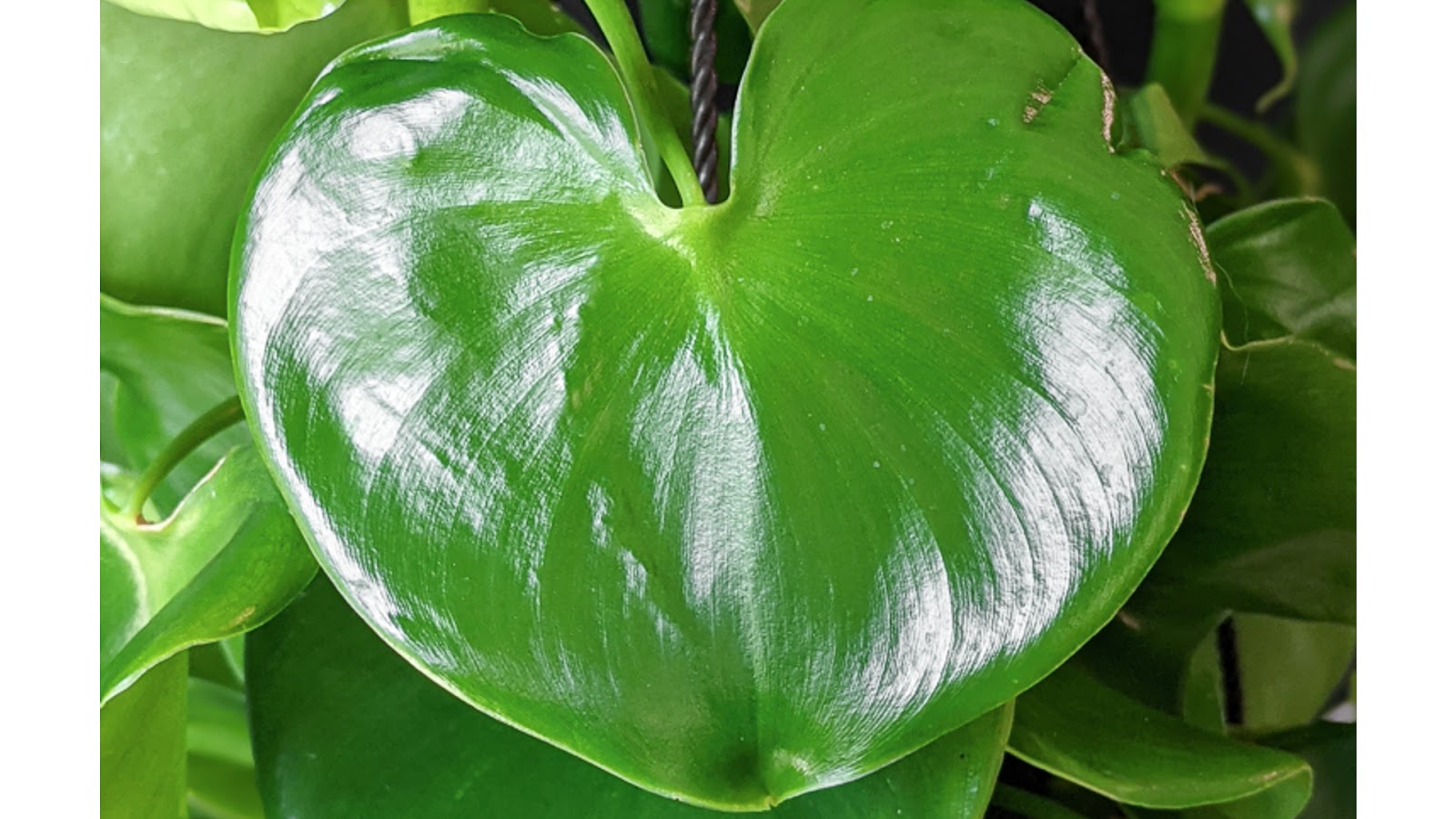
Philodendron Grazielae
This is also one of the types of philodendron that is a climber plant. Philodendron grazielae is natively found in an area from Peru to northern Brazil. This philodendron variety has rubber-looking heart-shaped leaves due to its glossy texture.
It is also a very sweet looking and trailing plant that would look great in hanging baskets. The vines can grow up to 3 feet tall. This heartleaf philodendron also loves the bright indirect light, and placing it near a bright, sunny window would be a great choice.
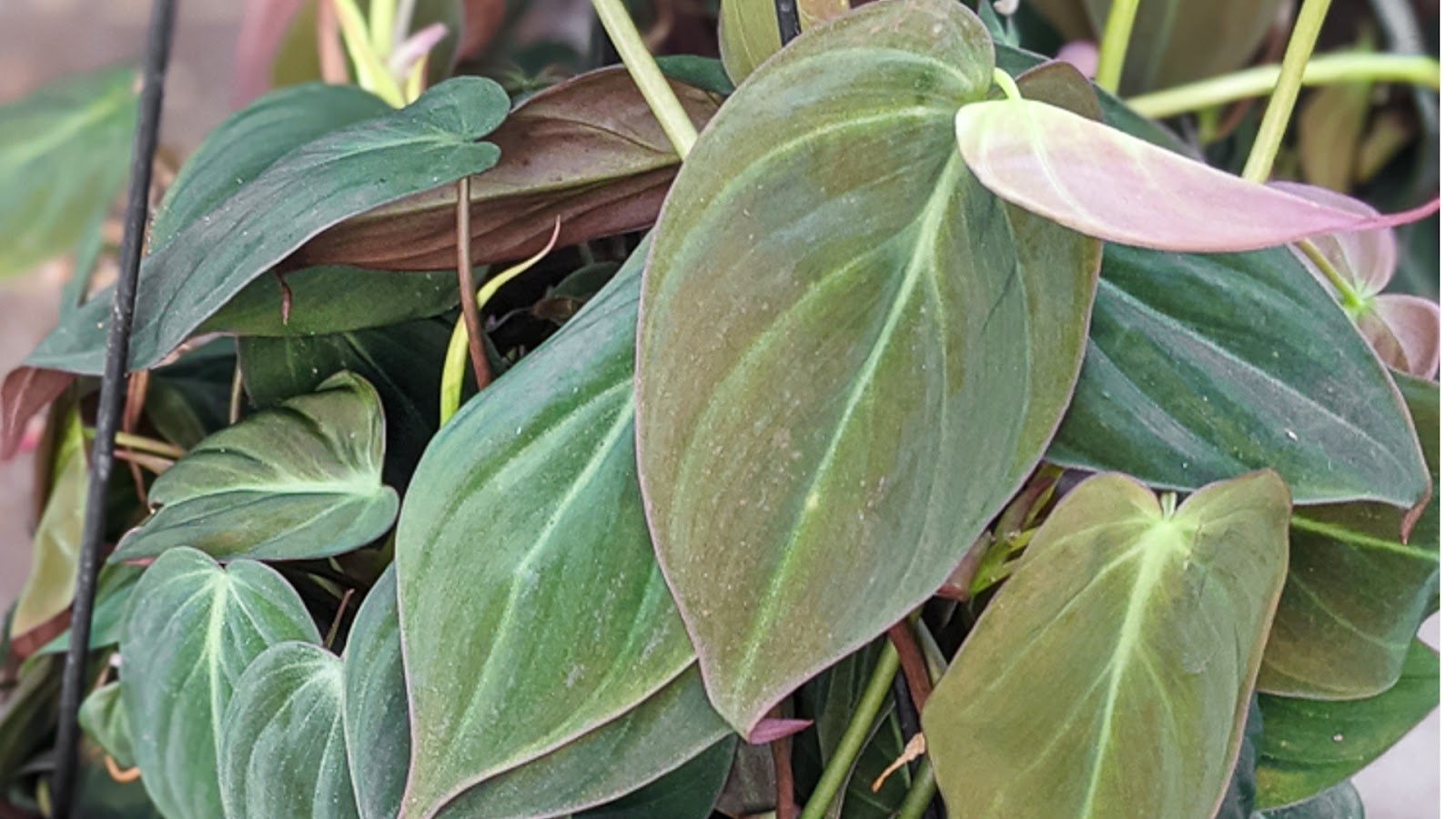
Philodendron Micans
Also known as Velvet Leaf Philodendron, philodendron micans is different from the usual heartleaf philodendron as it does not have those glossy and dark green leaves. However, it possesses velvet-textured, heart-shaped leaves that are greenish bronze with reddish- brown undersides, making it an easy-to-love heartleaf philodendron.
The foliage of velvet leaf philodendron is considerably beautiful as it has those beautiful light green veins. This philodendron should stand out to any rooms you will be putting in. This climber can grow up to 2 feet tall, but doesn’t love to be outdoors.
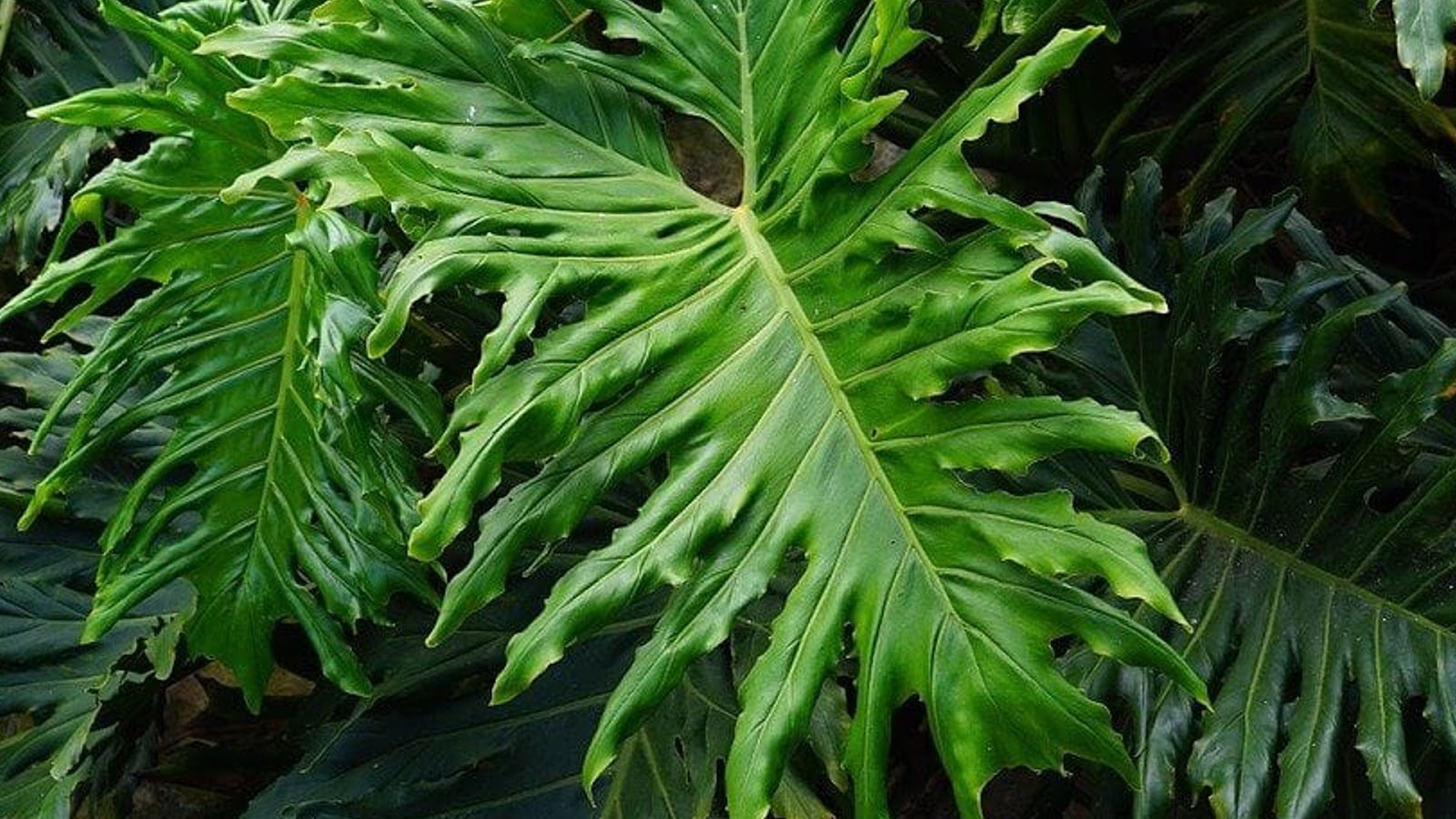
Split-Leaf Philodendrons
When young, the Split-leaf Philodendrons are very similar to Monstera deliciosa or the Swiss cheese plant. Their main difference would be their genus and species classifications.
Though the split-leaf is from philodendrons, this is a non-climbing plant that is similar to pothos and comes from the Araceae family. It has a botanical name, Thaumatophyllum Bipinnatifidum or formerly the Philodendron Selloum, and known as the lacy tree philodendron.
Unlike the Monstera deliciosa that has smooth or round and heart-shaped leaves, split-leaf or the lacy tree philodendron possess trunks and deeply lobed leaves. It can grow up to 4 feet tall and can spread up to 3 feet.
Since the split-lear has very large, deeply lobed leaves and long petioles medium green color and waxy coating aerial roots, it is a great decorative philodendron plant.
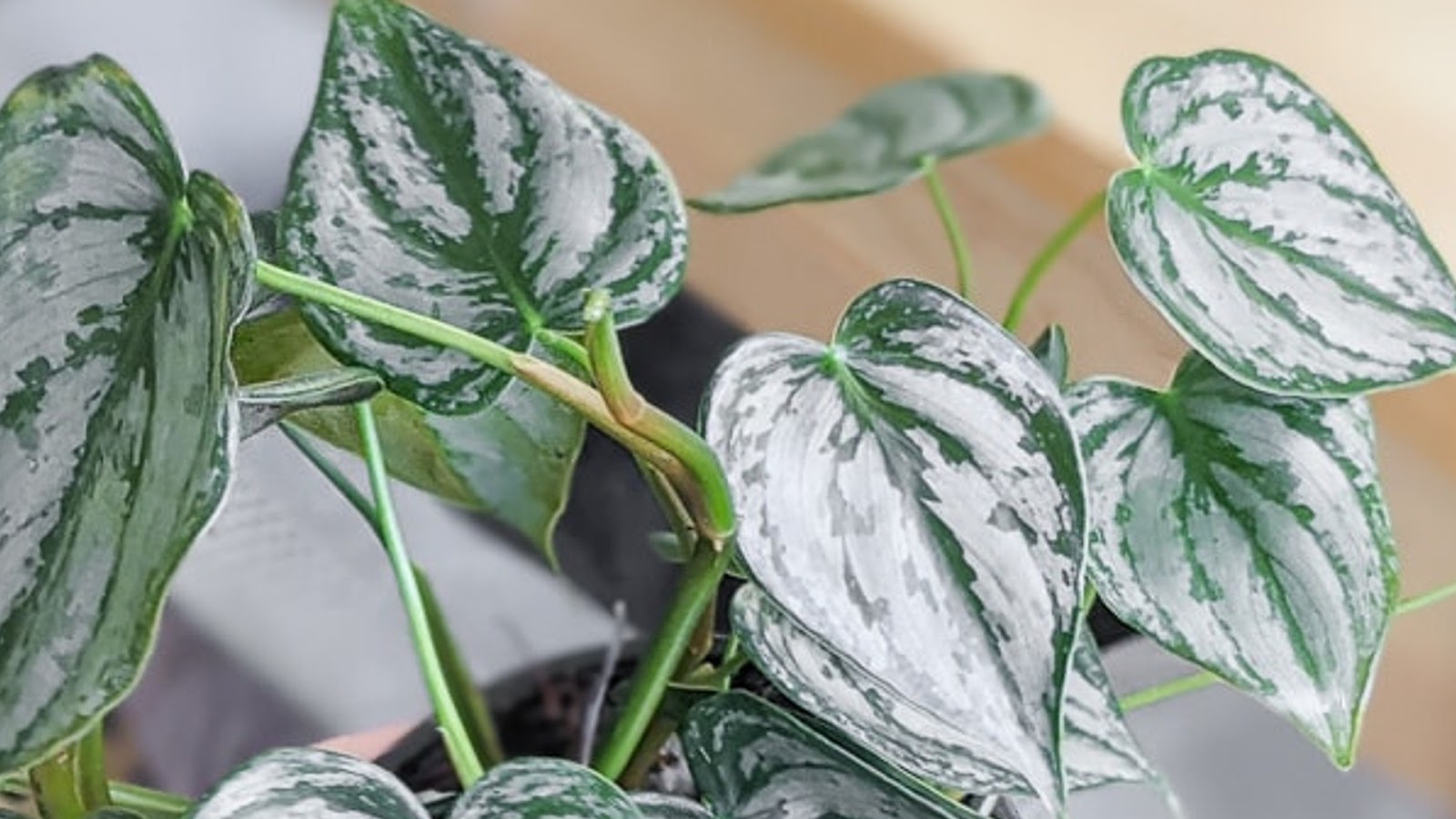
Philodendron Brandtianum
This is one of the philodendron varieties that is rare due to its olive green leaves with striking gray mottling and silver markings. This unique philodendron plant is also known as Silver Leaf Philodendron.
Just like the most of the philodendron varieties, it is also a vine plant that has heart-shaped leaves with an orange that fades out as the leaves mature to get dark to olive green with silver or white mottling.
Philodendron brandtianum is one of those fast-growing, low-maintenance, and bushy philodendron plants.
This plant would thrive well in areas with moderate or filtered light. It can also grow under semi-shady areas, but outdoors with intense sunlight may scorch the leaves.
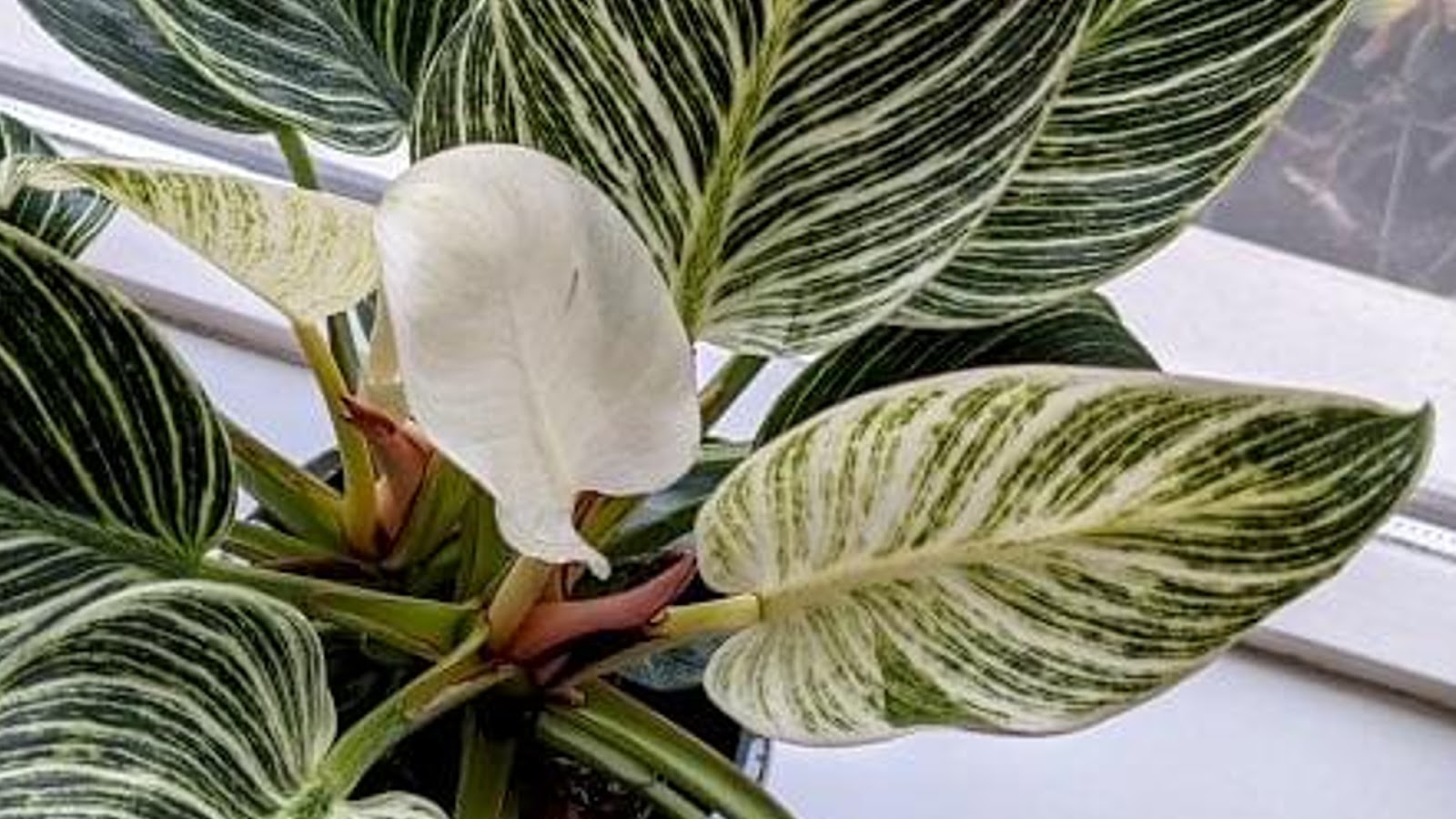
Philodendron Birkin
Philodendron birkin is one of those variegated philodendron varieties. The dark green leaves are being adorned with a light yellow variegation. This makes the philodendron birkin to stand out among the other types of philodendron.
This beautiful and hardy plant can also grow up to 3 feet tall and spread out up to 2 feet, making it a decorative variety, which can be perfect for most room designs.
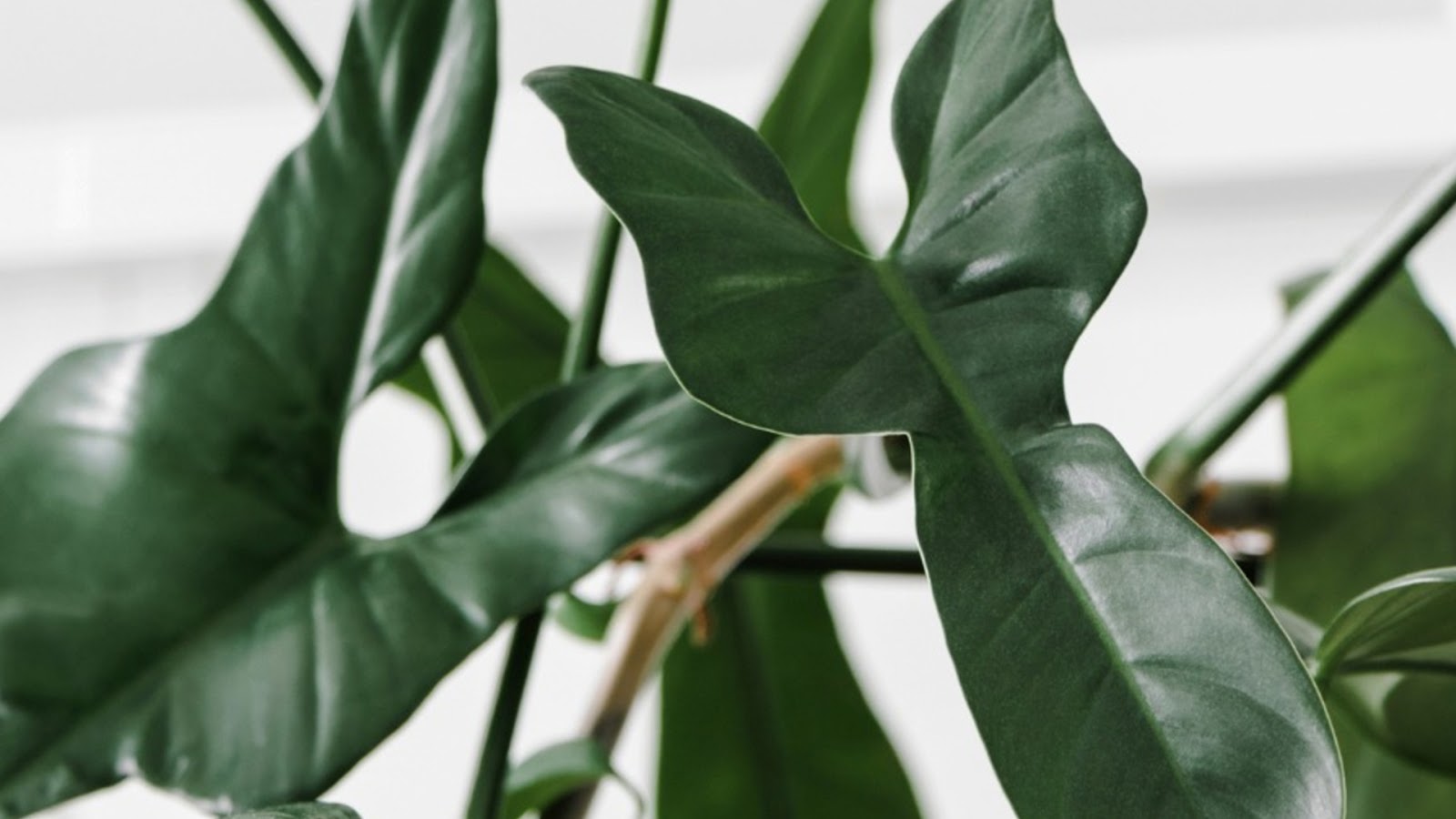
Philodendron Bipennifolium
One of the extremely rare tropical houseplants, this philodendron variety will grow with just the right amount of care. The philodendron bipennifolium is native to the tropical rainforest of Brazil.
Also known as Fiddleleaf or Horsehead, this herbaceous plant type has glossy green leaves. This philodendron plant would love to be under indirect sunlight and moderate watering. Well-draining loamy soil would also suit best, so make sure to have that where you are using a hanging basket or not.
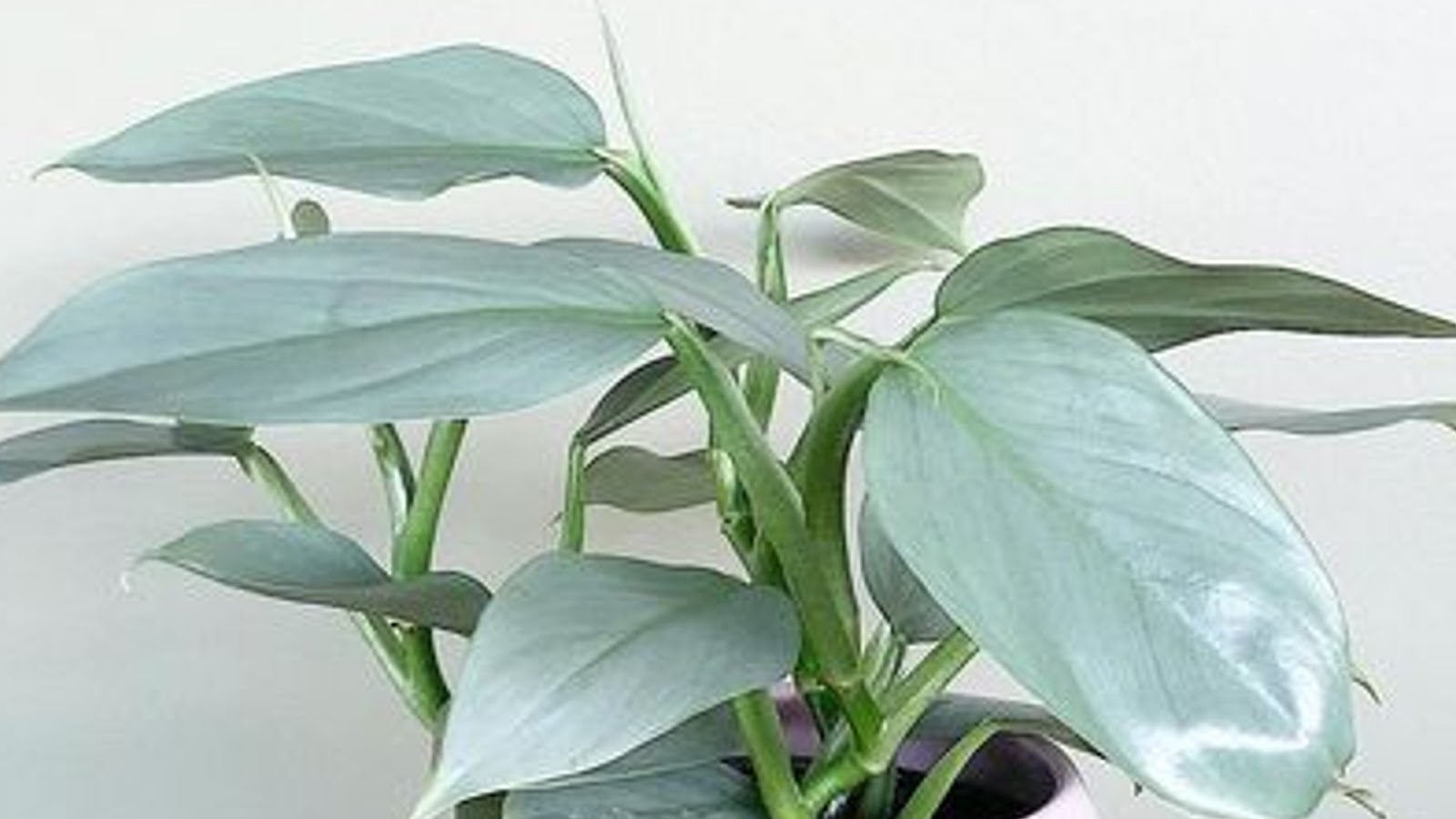
Philodendron Hastatum
Previously known by synonyms such as Philodendron domesticum or other names, philodendron hastatum is one of the types of philodendron. The hastatum has blue-tinged leaves and arrow/sword-resembling leaf shape with metallic silver shade, which is the reason why it is also named as Silver Sword plant.
It is best to place this plant in rooms with temperatures ranging from 18-25 degrees. You can water it on a regular basis, but make sure not to overdo it. It may be best to allow the soil to partly dry out before watering again.
The roots would also hate to be left soaking wet. Make sure to use a well-draining pot or hanging baskets.
How To Take Care The Types of Philodendron
Taking care of these philodendrons should be easy. Most of them can be used as indoor plants. If you will water the plants, allow the top inch of soil to dry up before watering again using water with room temperature. But don’t let the soil go completely dry at any time.
The vining philodendron and variegated philodendron variety would love that high humidity, ranging between 60% and 80%. You can keep humidity high by using any misting spray at home. Having the right humidity is the key feature in achieving those large dark green foliage.
Soil that is rich in organic matter, loose and well-draining should also be provided to take care of these types of philodendron. You should also maintain the pH level between 6.5 to 7.5.
It should also be fertilized using a fertilizer with a ratio 3-1-2 of NPK (three plant major nutrients that consists of nitrogen (N), phosphorus (P) and potassium (K). Do that every 6 to 8 weeks in fall and winter and every month during spring and summer.
Most of them will thrive under shady or medium light. You can place them outside as they love hot weather, but make sure they are on indirect light.

